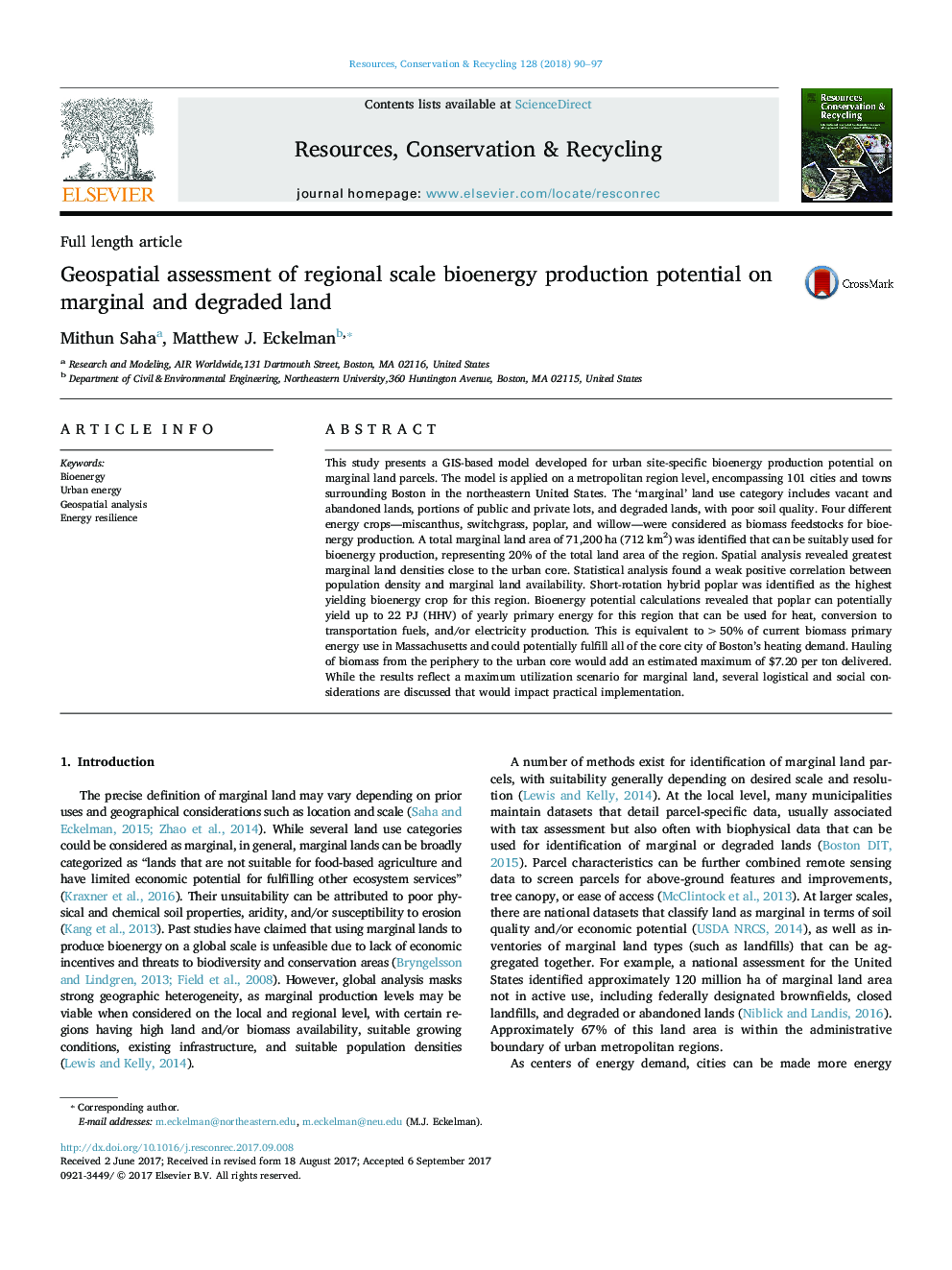| کد مقاله | کد نشریه | سال انتشار | مقاله انگلیسی | نسخه تمام متن |
|---|---|---|---|---|
| 5118713 | 1485664 | 2018 | 8 صفحه PDF | دانلود رایگان |
- 20% of land in the metro region surrounding Boston, USA can be classified as marginal or degraded.
- Marginal land was distributed regionally, with slightly higher prevalence toward the urban core.
- Bioenergy grown on regional marginal land could supply all of Boston's heating needs.
- Short-rotation hybrid poplar has the highest projected yields and bioenergy potential.
This study presents a GIS-based model developed for urban site-specific bioenergy production potential on marginal land parcels. The model is applied on a metropolitan region level, encompassing 101 cities and towns surrounding Boston in the northeastern United States. The 'marginal' land use category includes vacant and abandoned lands, portions of public and private lots, and degraded lands, with poor soil quality. Four different energy crops-miscanthus, switchgrass, poplar, and willow-were considered as biomass feedstocks for bioenergy production. A total marginal land area of 71,200Â ha (712Â km2) was identified that can be suitably used for bioenergy production, representing 20% of the total land area of the region. Spatial analysis revealed greatest marginal land densities close to the urban core. Statistical analysis found a weak positive correlation between population density and marginal land availability. Short-rotation hybrid poplar was identified as the highest yielding bioenergy crop for this region. Bioenergy potential calculations revealed that poplar can potentially yield up to 22 PJ (HHV) of yearly primary energy for this region that can be used for heat, conversion to transportation fuels, and/or electricity production. This is equivalent to >50% of current biomass primary energy use in Massachusetts and could potentially fulfill all of the core city of Boston's heating demand. Hauling of biomass from the periphery to the urban core would add an estimated maximum of $7.20 per ton delivered. While the results reflect a maximum utilization scenario for marginal land, several logistical and social considerations are discussed that would impact practical implementation.
249
Journal: Resources, Conservation and Recycling - Volume 128, January 2018, Pages 90-97
